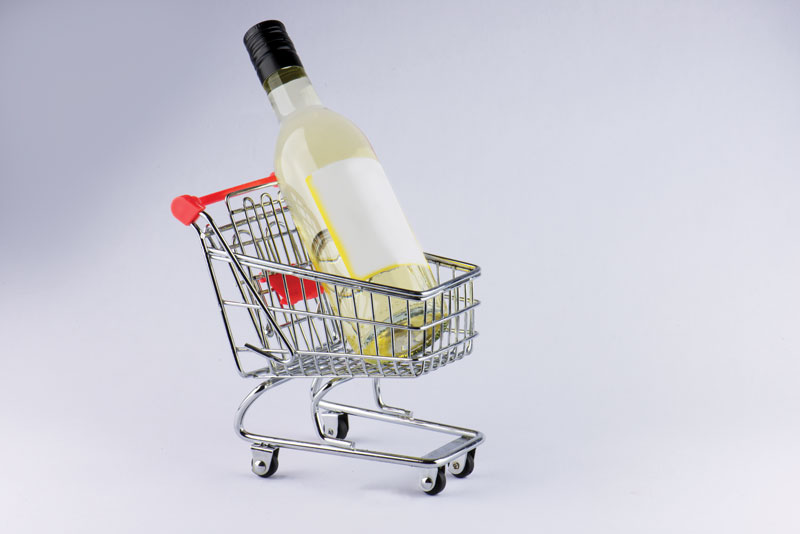The Ontario government has decided to “liberalize” the rules around when and where people can drink alcohol and how much it will cost, arguing that citizens should be free to make “responsible choices that work for them.” Freedom to make choices—even bad ones—is a good thing. If a change in public policy increases the range of choices, that’s a powerful point in its favour.
What the government doesn’t mention, however, is that this new policy will also increase opportunities for the alcohol industry to make money, and for the government to increase its tax revenues. Since there won’t be a limit imposed on the total amount of alcohol that can be sold, an increase in access will mean an increase in advertising. And advertising will increase sales.
The Ontario government’s own public health branch notes that “alcohol advertising is pervasive in today’s society and consists of sophisticated and integrated strategies aimed at creating positive beliefs about alcohol products and perceptions about its effects.” In other words, advertising works by biasing choices.
For some people, increased alcohol advertising will actually decrease choice. And for addicts, the decrease in choice will have severe consequences. To be addicted is equivalent to being unable to resist. With more places and times to drink and more inducement to do so, alcoholics will have fewer moments and places where they can live free.
There is good science that tells us (citizens, industry and government) of additional negatives. As the Public Health Agency of Canada says, “increased exposure and access to alcohol are linked to increased drinking,” and increased drinking leads to greater burdens on the health care system. Worldwide, 3.8 percent of women’s deaths and 12.2 percent of men’s deaths are attributable to alcohol use. That’s three million every year.
In Ontario alone, drinking is directly responsible for more than 5,000 deaths and 33,000 hospitalizations a year. The latest conclusion of scientists (according to the leading medical journal, The Lancet) is: “no level of alcohol consumption improves health.”
Ontario policy-makers know all of this. If asked, their response would surely be that every policy decision has plusses and minuses, costs and benefits, and they have to be balanced. Which sounds right. The question we need to ask is—how do we strike the balance?
One classic answer appeals to the principle of “the greatest good for the greatest number.” Perhaps doing the greatest good would explain the Ontario decision. Increased deaths, hospitalizations, addictions and constrained choices affecting a few thousand on the one hand, balanced against increased individual choice, increased enjoyment, increased jobs and increased dollars affecting a few million on the other.
One could toy with the calculation, suggesting, for instance, that the “greatest good” would be even greater if the alcohol industry paid for the rise in ill health and deaths. Still, finding the maximum aggregate would be the sole metric.
Is this principle really a sufficient guide for public policy? A more radical approach would be to argue for a “preferential option for the poor.” Many Protestant and Catholic ethicists contend that while the impact of a public policy must take everyone into account, the impact on those who are especially vulnerable—those who are already short on power or respect or material resources—should carry extra weight. If that were applied to the alcohol policies proposed for Ontario, it would conclude that the consequences for people at risk (e.g., those who have addictive personalities, young people and poor people) should be considered first. This principle may be better, but I question its sufficiency, too. When Jesus introduced the principle of “whatever you did for one of the least of these brothers and sisters of mine, you did for me” (Matthew 25:40), I think he was calling attention to an attitude, as well as a quantitative measure.
I am a parent of three and I know how much children demand fairness—I know what it is to wrestle with what constitutes equal measures. But the decisions I needed to make were for my children and not just three objects of my benefaction. The decisions could never be reduced to a mere economic metric.
It is hard—perhaps impossible—to put into words what it is to treat another person as a brother, sister or neighbour, but I suggest that is where public policy-making in a Christian spirit has to begin.
This applies equally if we are talking about government policy-making or Salvation Army policy-making. Do government alcohol policies and Salvation Army rehabilitation policies look any different, we should ask, if they are made with brothers and sisters in mind, not only consumers, taxpayers or beneficiaries?
Dr. James Read is the executive director of The Salvation Army Ethics Centre in Winnipeg.
Photo: fiorigianluigi/iStock.com
What the government doesn’t mention, however, is that this new policy will also increase opportunities for the alcohol industry to make money, and for the government to increase its tax revenues. Since there won’t be a limit imposed on the total amount of alcohol that can be sold, an increase in access will mean an increase in advertising. And advertising will increase sales.
The Ontario government’s own public health branch notes that “alcohol advertising is pervasive in today’s society and consists of sophisticated and integrated strategies aimed at creating positive beliefs about alcohol products and perceptions about its effects.” In other words, advertising works by biasing choices.
For some people, increased alcohol advertising will actually decrease choice. And for addicts, the decrease in choice will have severe consequences. To be addicted is equivalent to being unable to resist. With more places and times to drink and more inducement to do so, alcoholics will have fewer moments and places where they can live free.
There is good science that tells us (citizens, industry and government) of additional negatives. As the Public Health Agency of Canada says, “increased exposure and access to alcohol are linked to increased drinking,” and increased drinking leads to greater burdens on the health care system. Worldwide, 3.8 percent of women’s deaths and 12.2 percent of men’s deaths are attributable to alcohol use. That’s three million every year.
In Ontario alone, drinking is directly responsible for more than 5,000 deaths and 33,000 hospitalizations a year. The latest conclusion of scientists (according to the leading medical journal, The Lancet) is: “no level of alcohol consumption improves health.”
Ontario policy-makers know all of this. If asked, their response would surely be that every policy decision has plusses and minuses, costs and benefits, and they have to be balanced. Which sounds right. The question we need to ask is—how do we strike the balance?
One classic answer appeals to the principle of “the greatest good for the greatest number.” Perhaps doing the greatest good would explain the Ontario decision. Increased deaths, hospitalizations, addictions and constrained choices affecting a few thousand on the one hand, balanced against increased individual choice, increased enjoyment, increased jobs and increased dollars affecting a few million on the other.
One could toy with the calculation, suggesting, for instance, that the “greatest good” would be even greater if the alcohol industry paid for the rise in ill health and deaths. Still, finding the maximum aggregate would be the sole metric.
Is this principle really a sufficient guide for public policy? A more radical approach would be to argue for a “preferential option for the poor.” Many Protestant and Catholic ethicists contend that while the impact of a public policy must take everyone into account, the impact on those who are especially vulnerable—those who are already short on power or respect or material resources—should carry extra weight. If that were applied to the alcohol policies proposed for Ontario, it would conclude that the consequences for people at risk (e.g., those who have addictive personalities, young people and poor people) should be considered first. This principle may be better, but I question its sufficiency, too. When Jesus introduced the principle of “whatever you did for one of the least of these brothers and sisters of mine, you did for me” (Matthew 25:40), I think he was calling attention to an attitude, as well as a quantitative measure.
I am a parent of three and I know how much children demand fairness—I know what it is to wrestle with what constitutes equal measures. But the decisions I needed to make were for my children and not just three objects of my benefaction. The decisions could never be reduced to a mere economic metric.
It is hard—perhaps impossible—to put into words what it is to treat another person as a brother, sister or neighbour, but I suggest that is where public policy-making in a Christian spirit has to begin.
This applies equally if we are talking about government policy-making or Salvation Army policy-making. Do government alcohol policies and Salvation Army rehabilitation policies look any different, we should ask, if they are made with brothers and sisters in mind, not only consumers, taxpayers or beneficiaries?
Dr. James Read is the executive director of The Salvation Army Ethics Centre in Winnipeg.
Photo: fiorigianluigi/iStock.com










Comment
On Friday, August 9, 2019, Concerned said:
On Thursday, August 1, 2019, Lianne Calvert MacGregor said:
Leave a Comment